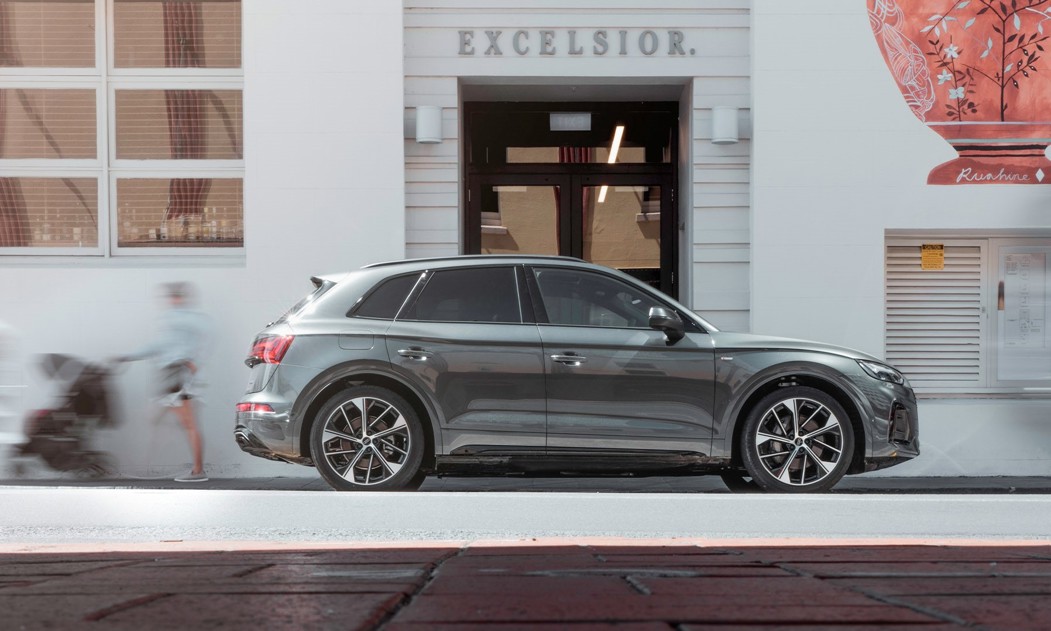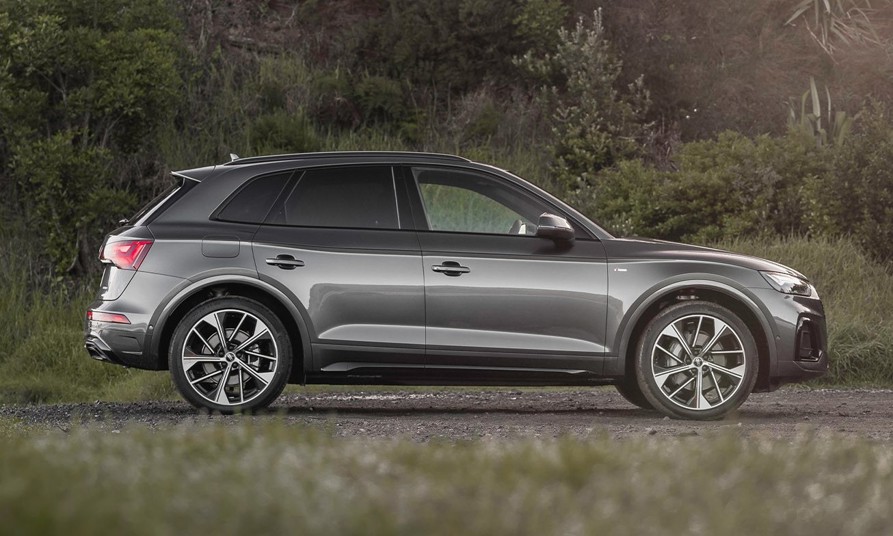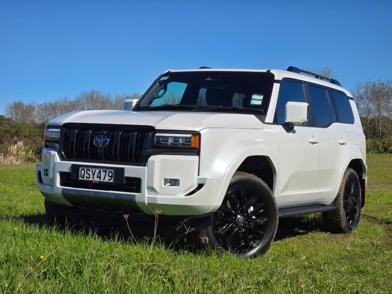You could be forgiven for thinking there’s nothing to see here. After all, it’s simply Audi’s mainstay Q5 SUV. Nice, but not a head-turner.

However, the Q5 before us is very new indeed. It’s the 50 TFSI e, which in normal-people-words is a 2.0-litre model with Audi’s latest plug-in hybrid electric vehicle (PHEV) technology and a version of quattro all-wheel drive called Ultra.
Audi’s very first plug-in models were PHEVs, of course (the A3 e-tron appeared a decade ago), but the company rapidly switched (ha ha) to pure-electric models like the e-tron SUV.

New cars like the Q5 TFSI e see it circling back to PHEV technology… to move forward and broaden the electrification of its model ranges.
The 2.0-litre turbo-petrol engine (195kW/370Nm) is textbook stuff for a Volkswagen Group SUV. The “e” bit in the badge means it also has a 14.4kWh plug-in battery and 105kW/350Nm electric motor (integrated into the 7-speed dual-clutch transmission), giving a claimed 59km of EV range and a surprising amount of poke away from the lights, with combined output of 220kW/450Nm and 0-100km/h in 6.1sec.

The Q5 TFSI e is also special in Audi-world because it’s the first EV to employ the Ultra version of the brand’s quattro all-wheel drive system in combination with electric drive.
But what exactly is Ultra, you ask? It’s been around for a while, sans the electric component: Audi’s new-generation quattro that can act in a “proactive, predictive and reactive” way – essentially talking to a whole bunch of sensors in the car to decide how to behave, for what’s about to come. The really big difference is that Ultra can decouple the rear axle when AWD is not needed, so it’s notable for being quattro that’s… not always AWD.

There’s a lot going on, but the Q5 TFSI e is an astonishingly smooth and simple-to-drive SUV in almost any driving situation. We got 40-45km pretty consistently from the battery, which is way off the 80km-plus from many premium (and mainstream, actually) PHEV-rivals. But plenty for daily commuting and it’s just so refined.
The car encourages the driver to be smoother still, with a predictive efficiency assistant (PEA) that can adjust the regenerative braking according to the distance from the vehicle in front and even whether there’s a roundabout coming, according to the sat-nav (it can also issue prompts to the driver, like a haptic touch on the throttle). This is really clever stuff.

The Q5 is equally smooth in Hybrid mode – the transition between electric and petrol power is seamless, as is the transition between AWD and FWD. You really wouldn’t have a clue about the work going on underneath, as the technology just gets on with making your A-to-B as calm, quick and ruthlessly efficient as possible.
You do have the opportunity to control the powertrain somewhat. You can select EV (self-explanatory) or Hybrid, the latter offering automatic, hold (keep the current state of battery charge) or charge subset-settings.

Hybrid mode is also activated automatically when you have a route programmed in the sat-nav, and the car then decides how best to use the available charge to get to the destination most efficiently.
The attention to detail in the PHEV powertrain and chassis technology is simply staggering, all the more so when you realise you could drive the car for years and be blissfully unaware of any of it. In the nicest possible way.

In fact, it takes the concept of "nice" to a whole new level of… niceness; as a sensibly-sized pseudo-luxury eco-express, it’s really hard to fault the Q5 TFSI e. It’s quite lavish for the money too, with sports seats in Nappa leather, a completely digital cockpit, the usual Audi touchy-feely ooh-and-ahh soft-touch materials and lots of online information via an embedded SIM.
The Q5’s relative age means more physical switchgear than you get in newer Audis; it looks a snip old-fashioned but then many users might prefer proper buttons, especially for the likes of the PHEV drive modes when you need to keep your eyes on the road. It’s a matter of taste.

It’s a practical proposition too, bearing in mind it’s essentially a medium-sized SUV. The one downside of the PHEV tech is the requirement to package the batteries under the boot floor, so you lose 90l of cargo space – but retain a still-respectable 450l.
Excellence is the key word here, and yet the Q5 PHEV is still a hard car to fall in love with. The whole thing is so clever and low-key that there’s some character lacking. You can revel in the tech and refinement, but you won’t necessarily be beaming about the drive: there’s so much polish but not a lot of joy, even with dynamically focused features like the 50 TFSI e’s standard adaptive air suspension.

What the Q5 50 TFSI e really does is unobtrusively introduce a new level of hybrid/quattro technology that will help transition the brand through to pure-electric status across all model ranges by 2033. Which could be ultra-interesting after all.
AUDI Q5 50 TFSI e S line
ENGINE: 2.0-litre turbo-petrol four with 14kWh plug-in battery and electric motor
POWER: 220kW/450Nm (combined)
GEARBOX: 7-speed automated dual clutch, AWD
CONSUMPTION: 1.6l/100km, EV range 59km (3P-WLTP)
PRICE: $114,900


















